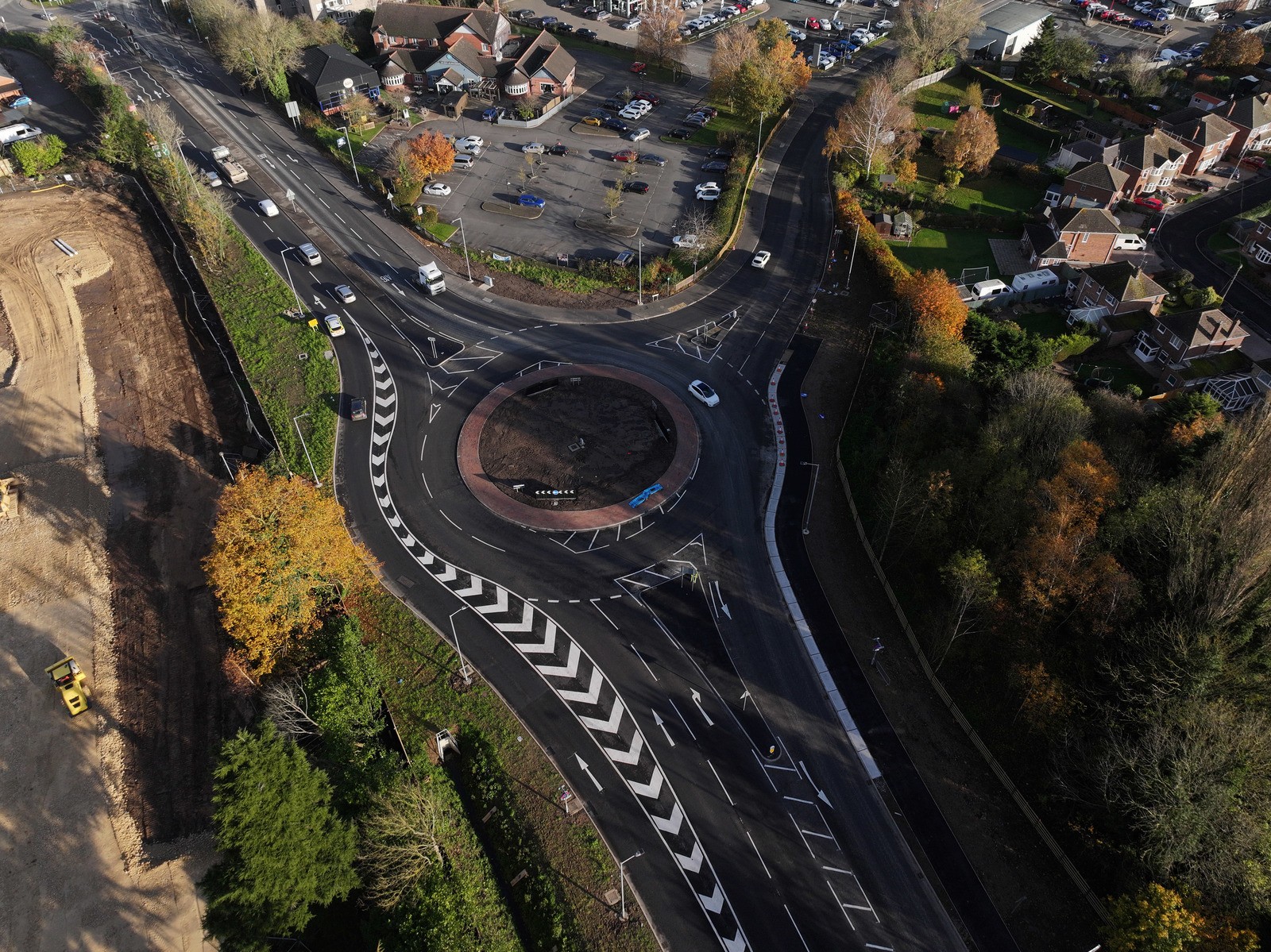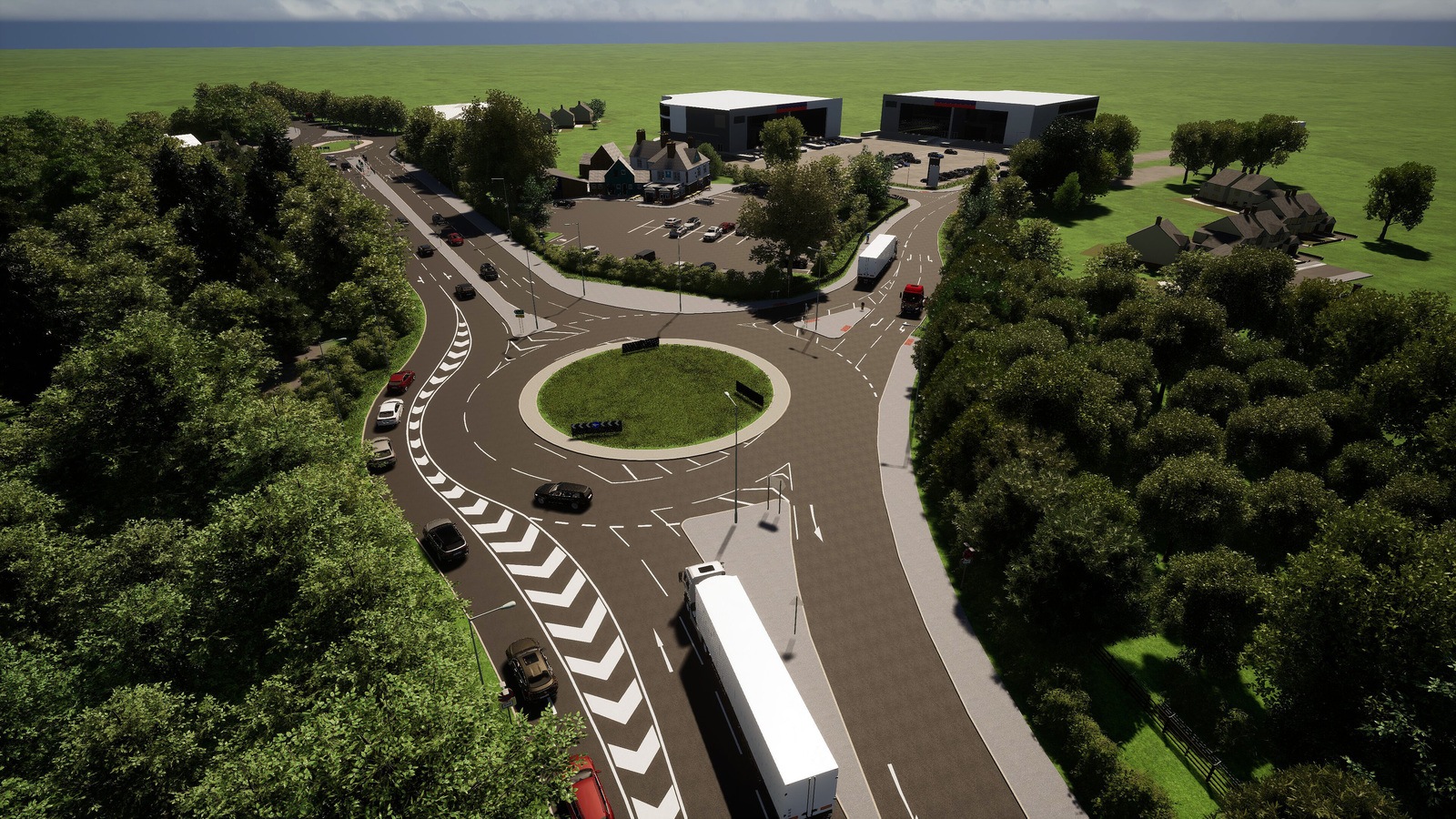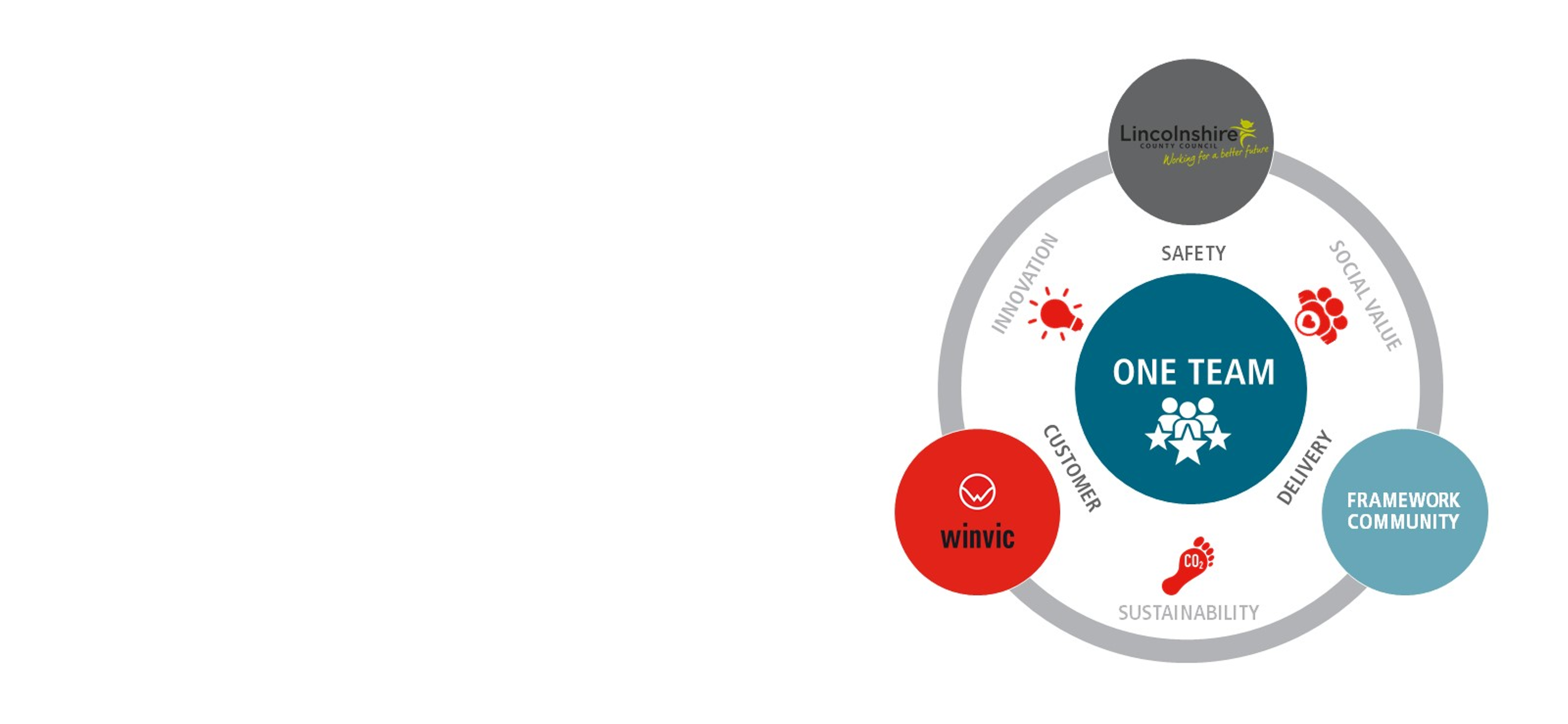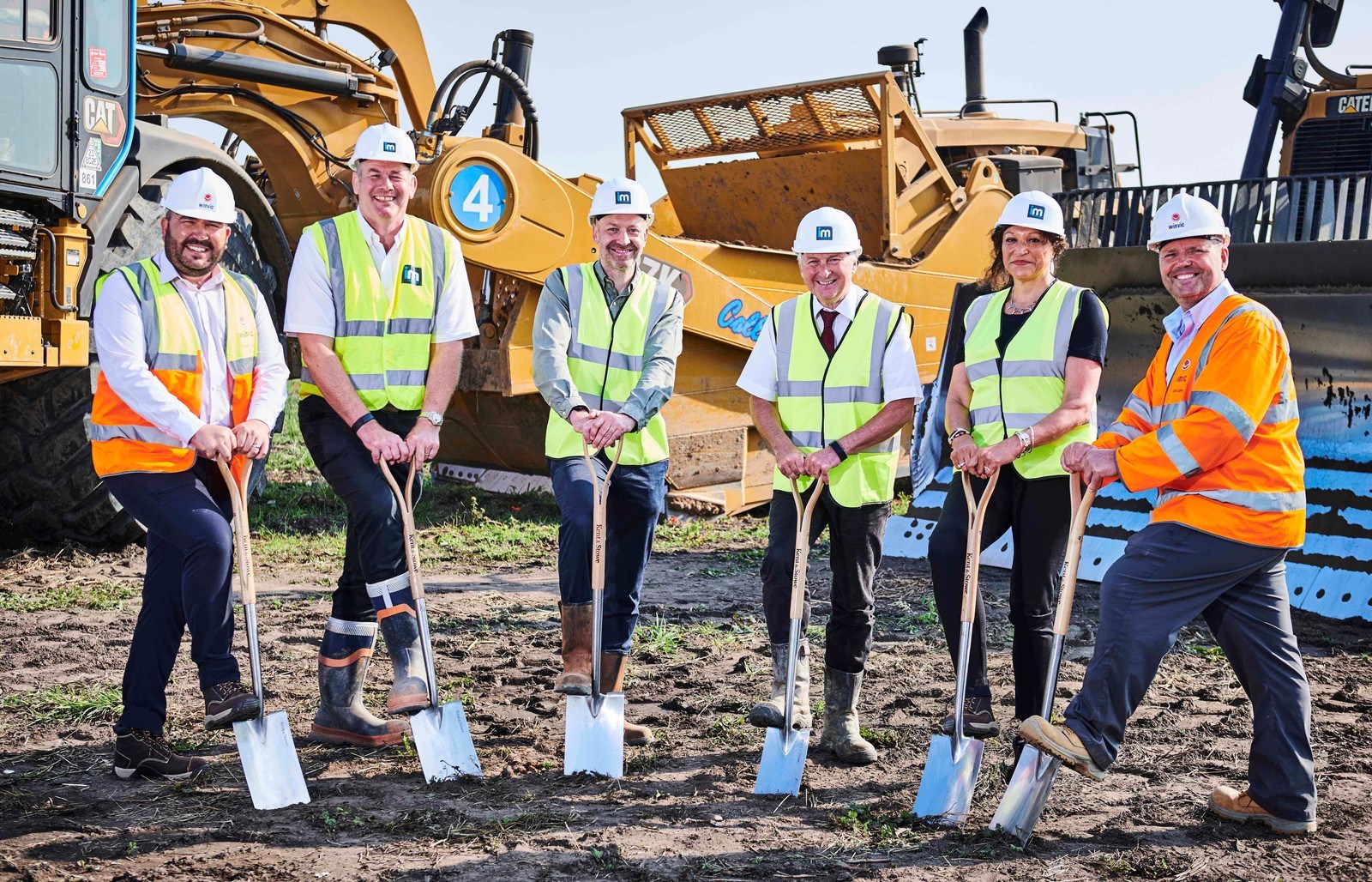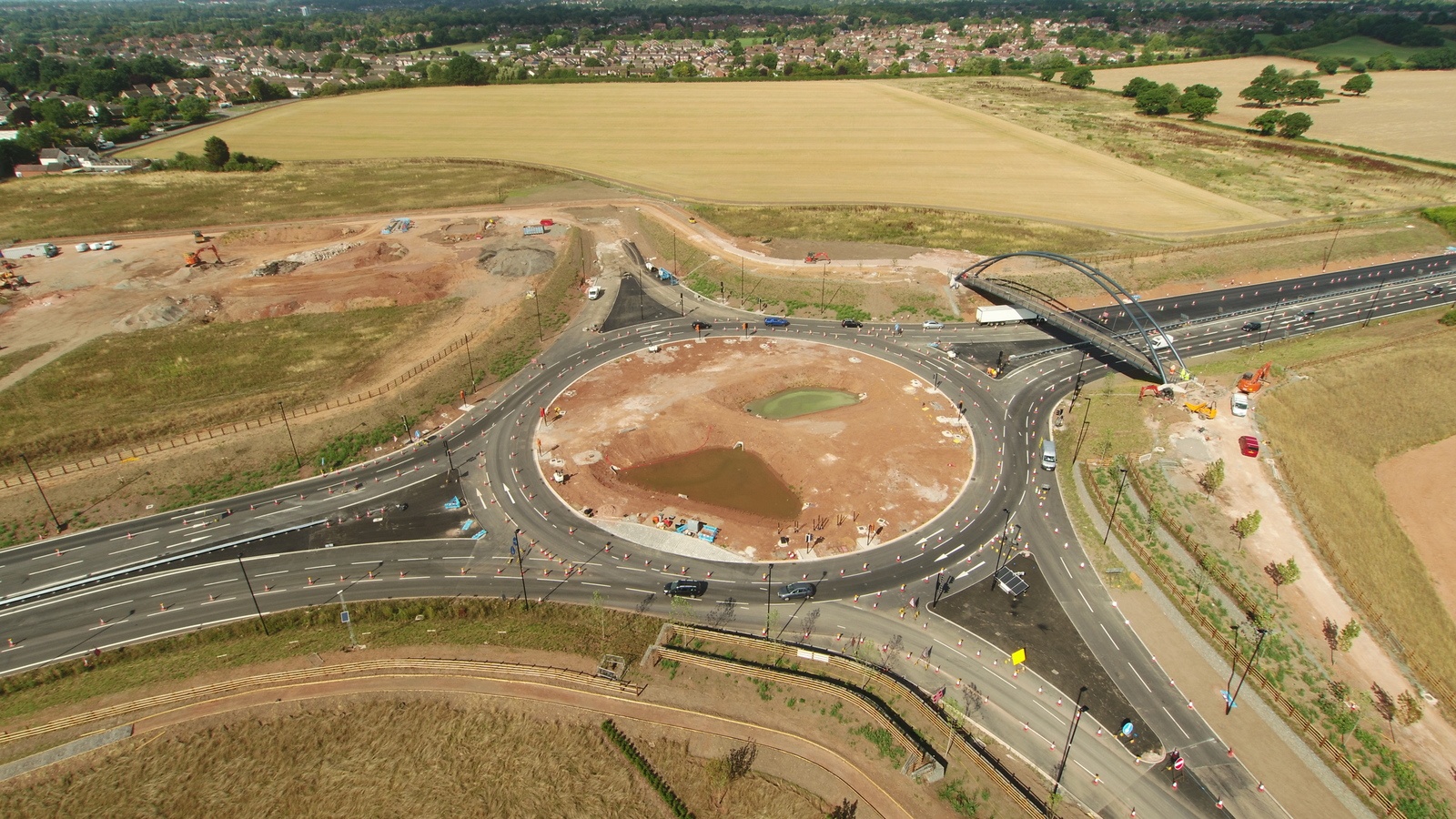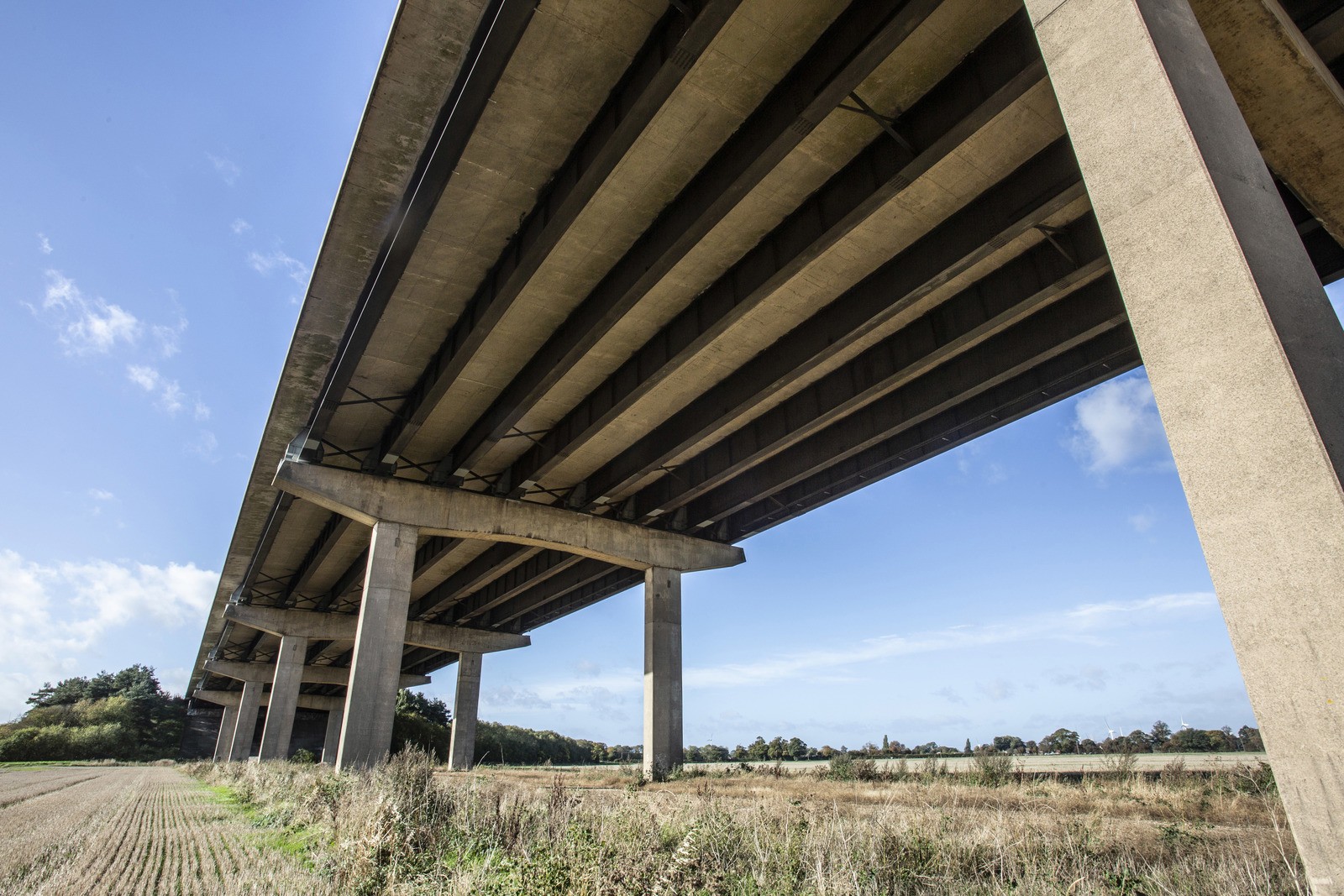Jared Taylor, Winvic’s Civils & Infrastructure Contracts Director shares his insights on achieving true collaborative partnerships.
One of Winvic’s core values is to question ‘is there a better way?’, and our experience has taught us that one of the ingredients to a successful project is to work as one team. The recently completed A16 Marsh Lane highways improvement project is a great example. Throughout this scheme under the Lincolnshire County Council (LCC) Framework we fostered a collaborative and supportive approach, and navigated risks and challenges together throughout the design and construction phases. As we were the first contractor to deliver within Lot 2 of the highways framework, we faced an accelerated contract award and mobilisation; our agile collaborative approach ensured we quickly grasped LCC’s working customs and practices and established strong working relationships with the client team early on. By we, I mean the Winvic team, and its supply chain partners, who I can’t praise enough. Kilkern, Breedon Contracting, Mason Street Furniture, Traffic Safety Management, Jointline and AA Lamb exceeded all expectations to make each step in the project process a true success. We will again be applying our tried and tested collaborative approach to highways, structural and civils works under Warwickshire County Council’s Framework, which we were recently awarded a place on.

Collaboration, therefore, certainly isn’t new to Winvic or the wider industry, but it has gained terrific pace in recent years. I am delighted that Winvic is being recognised as a leader in collaborative activity and I was asked by the Chartered Institution of Highways and Transportation (CIHT) to be on the judging panel for their CIHT Awards 2024; Winvic is also the Collaboration category sponsor. While that’s undeniably positive – we all understand the benefits – the term doesn’t always mean the same to everybody. Is there a danger of the word being peppered through documents, but disconnected from true collaborative actions? You can’t it turn on and off as you walk in and out of a meeting or say you’re collaborative and then act passively; it’s an always on, active and positive approach.
Have you ever thought ‘that’s not very collaborative of them’? Maybe that party thinks that they are acting collaboratively so in the same way that any business will set its priorities and KPIs to be able to measure effectiveness, a group of partners must agree what’s important within a collaborative strategy and evaluate during the process. We are members of The Local Council Roads Innovation Group (LCRIG), adding value to the sector and supporting the group’s mission – centred around collaboration, innovation, skills, and decarbonisation – for the continuous improvement of local roads. We have also achieved ISO 44001 – the standard for collaborative business relationship management systems – but I believe similar standards could be implemented by anyone on any project in the form of a Collaboration Charter.

When all is said and done the client will make the final decisions, but equality, proactivity, broad-mindedness, flexibility and a clear understanding of the goals are fundamental for everyone at the table. Starting with goals – what must happen, what cannot happen? How is importance weighted across cost, completion date, public disruption, safety, sustainability, innovation and the limits of engineering? In setting the scene this way, a Collaborative Charter becomes a guiding beacon throughout the project, which is especially useful in evaluating and filtering conceptual ideas into real solutions. For example, in highways terms, solution A is less cost efficient but is more expeditious, B causes most public disruption but is under budget and C meets the budget but the timeline will be extended; the overarching project priorities should steer the team towards which idea is the most viable.
Armed with a project vision, partners can next agree to the principles of collaboration and, importantly, with that shared view comes accountability of putting those standards at the heart of everything. It is really up to the collaborators to decide – and agree – what it means to them but the aim is to have a common set of models to follow, from the top-level approach right down to the granular, such as how people are expected to participate in a collaborative planning meeting. The right mentality facilitates organic collaborative development and magical things can happen when it’s embedded in an organisation’s culture. As I mentioned at the start, Winvic’s company values – also known as The Winvic Way – drive us to question and challenge the norm. However, the other four values are also cornerstones within collaborative delivery so with our ethos of respect, loyalty, honesty and passion it’s no wonder we’re well placed to achieve great things with other people. True collaboration is a mindset.
Project delivery teams can also learn much about true collaboration from the area of social value. We’re proud of the spectacular outcomes coming out of the working groups that Winvic participates in which include Civil Engineering Contractors Association (CECA) Midlands ‘Foundations’ group, chaired by Winvic’s Head of Marketing, Communications and Social Value, which focuses on working collaboratively to create greater impact. The group has created a pioneering Social Value toolkit to help businesses – particularly small and medium sized firms – understand the best ways to bring social value to the work they undertake and also to evaluate its positive impact. The Peddimore Social Value Strategy – which has been awarded the Social Value Award by CECA Midlands – was influenced by Birmingham City Council’s Business Charter for Social Responsibility. Our work to identify and engage with partners began over 12 months before construction commenced, first joining project client IM Properties on the North Birmingham Economic Recovery Board (NBERB) and then forming the North Birmingham Employment and Skills Board (NBESB). A collaborative, flexible, cross-agency approach allowed ideas to flourish, and the social value targets were exceeded due to the volume of quality, targeted projects that we delivered as one.

The Section 278 works at Peddimore were also shortlisted for the Major Project Award in both the Highways and Highways UK Excellence awards. Winvic is a member of the Yorkshire and Northeast Community team along with 19 other contractors and the client, as part of its work in that region under the National Highways SDF. And we won Team of the Year, recognising the group’s outstanding social value collaboration. As with Peddimore, our shared goals and activity has meant we’ve achieved more than we ever could in siloes. A total of 260 dignity bags have been donated to homeless people, 27 bags of food have reached foodbanks to date, £2,800 will be raised for a charity from donation sorting and 19 bags of clothes were also donated. Plus £915 was raised for the Goole Toy Appeal, which ensured local children experienced the full joy of the festive season. We’ve worked with Durham College, Middlesborough College, and Wakefield College to provide T-level placements and employer talks, attended Sheffield and Leeds Apprenticeship Careers Fairs and we recently completed work to create a more inclusive playground at Hook Primary School. And we’re doing similarly good work in the Southeast region for National Highways where our Social Value Manager is the Chair of the social value alliance working group, ensuring best practice sharing and keynote speakers provided at every session, a space to collaboratively drive key areas of the National Highways Social Value Strategy encouraging innovative ideas backed by community input. In addition to dignity bag and Christmas food bank donations, we’ve collected 13kg of waste from Solent Beach in Bournemouth, have a number of collaborative volunteer opportunities and we’re organising an event where SMEs can understand how to be a more inclusive employer for the armed forces community.
Formalising processes, expectations and goals without supressing ideas illustrates a mature approach to collaboration, fitting for 2024. When mastered, the benefits realised – whether cost savings, reduced road closures or long-term maintenance gains – are inspiring. But why don’t you start a conversation with your team about what collaboration means to them.


 Share
Share
 Repost
Repost
 LinkedIn
LinkedIn
 Email
Email
